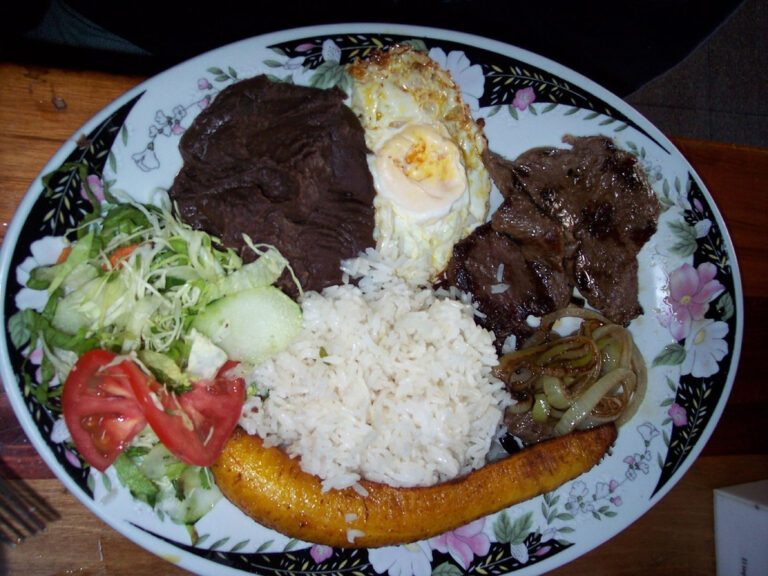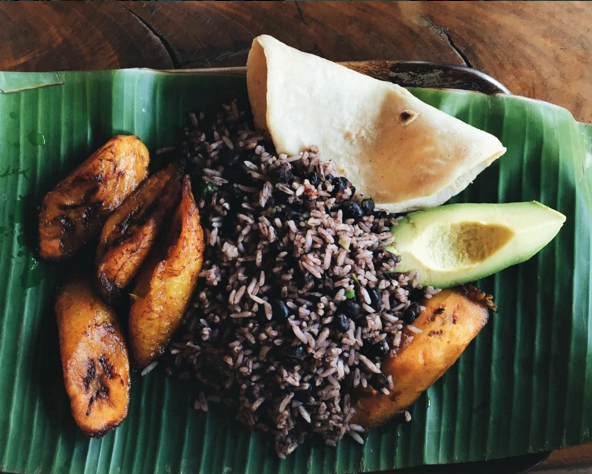Introduction: Exploring Costa Rican Breakfasts
Costa Rica is a country known for its vibrant culture, stunning landscapes, and delicious cuisine. One of the highlights of any trip to Costa Rica is sampling the traditional breakfast options. From Gallo Pinto to Huevos Rancheros, the country offers a range of flavorful dishes that are sure to satisfy any palate. In this article, we will explore some of the most popular breakfast options in Costa Rica.
Gallo Pinto: The Quintessential Costa Rican Dish
Gallo Pinto is a dish that is beloved by locals and tourists alike. This traditional breakfast dish consists of rice and beans that are cooked together with a blend of spices and vegetables. The dish is typically served with a side of scrambled eggs, corn tortillas, and sour cream. Gallo Pinto is a hearty and filling breakfast option that is perfect for starting the day off right.
Huevos Rancheros: A Hearty Breakfast Option
Huevos Rancheros is another popular breakfast option in Costa Rica. This dish consists of fried eggs that are served on top of a bed of tortillas and smothered in a spicy tomato sauce. The dish is typically served with a side of refried beans and avocado. Huevos Rancheros is a filling breakfast option that is perfect for those who need a little extra energy to start their day.
Tamales: A Festive and Filling Breakfast Treat
Tamales are a festive and filling breakfast treat that is typically served during the holiday season. This traditional dish consists of a mixture of corn dough, meat, and vegetables that are wrapped in a banana leaf and steamed. Tamales are often served with a side of salsa and sour cream. This dish is a true taste of Costa Rican culture and is sure to satisfy any appetite.
Chorreadas: Costa Rican Corn Pancakes
Chorreadas are a traditional Costa Rican breakfast dish that is similar to pancakes. These corn pancakes are made with a mixture of cornmeal, milk, and eggs, and are typically served with a side of sour cream and cheese. Chorreadas are a sweet and savory breakfast option that is perfect for those who want to try something new.
Arroz con Leche: A Sweet and Creamy Breakfast Dessert
Arroz con Leche is a sweet and creamy rice pudding that is often served for breakfast in Costa Rica. This dish consists of rice that is cooked in milk and sweetened with sugar and cinnamon. Arroz con Leche is typically served with a side of fresh fruit and is a great way to start the day off on a sweet note.
Casado: A Balanced Breakfast Meal with Everything You Need
Casado is a balanced breakfast meal that consists of rice, beans, meat, salad, and plantains. This dish is a great option for those who want a filling and nutritious breakfast that will keep them going throughout the day. Casado is typically served with a side of salsa Lizano, a popular condiment in Costa Rica that is made with vegetables, spices, and vinegar.
Salsa Lizano: The Must-Have condiment for Costa Rican Breakfasts
Salsa Lizano is a must-have condiment for any Costa Rican breakfast. This sauce is made with a blend of spices, vegetables, and vinegar and is often used to add flavor to Gallo Pinto, Huevos Rancheros, and other traditional breakfast dishes. Salsa Lizano is a versatile condiment that can be used in a variety of dishes and is a staple in Costa Rican cuisine.
In conclusion, Costa Rican breakfasts are a delicious and diverse part of the country’s cuisine. From Gallo Pinto to Tamales, there is a dish to suit every taste and preference. Whether you are a foodie or simply looking to try something new, be sure to explore the traditional breakfast options during your next trip to Costa Rica.










